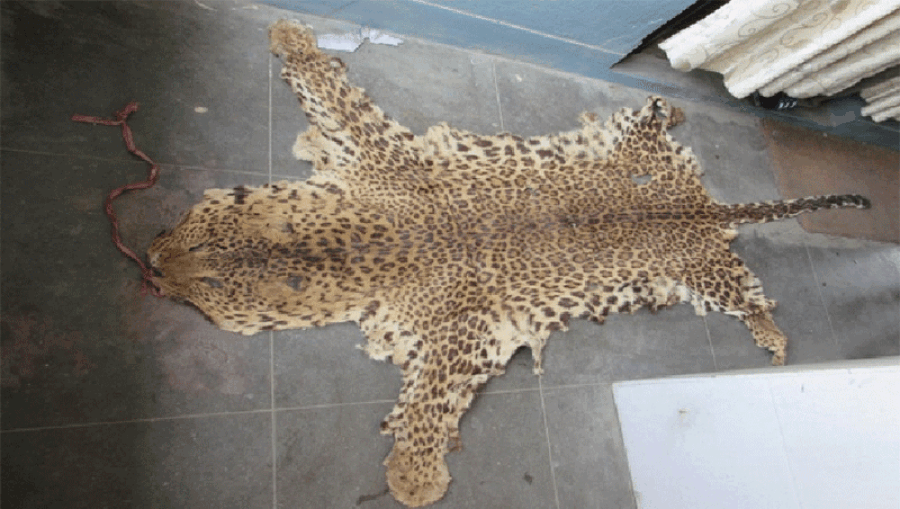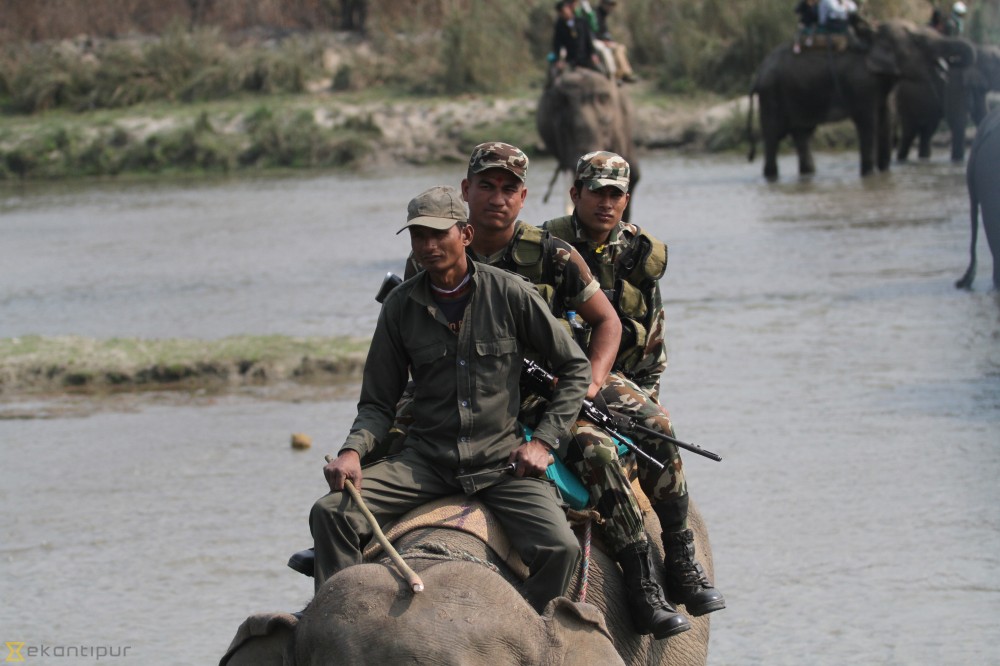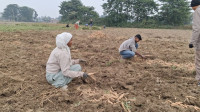National
Poverty alone not a leading cause for involvement in illegal wildlife trade, new study says
Most inmates currently serving jail terms for wildlife trade knew that the activity was illegal but were unaware of the severity of the consequences, according to the study.
Chandan Kumar Mandal
Poverty and ignorance of the law are not the driving factors behind wildlife crimes in the country, according to a new study.
The study, published recently in the journal Conservation Science and Practice, attempts to provide insight into the motivations of people who have taken part in poaching and the illegal trade in animal parts. While Nepal has been internationally lauded for its conservation model, there have been consistent concerns about the effects of this model on indigenous populations that once lived in symbiotic relationships with the forests and wildlife.
Based on a sample of 384 individuals jailed across the country for wildlife infractions, and interviews with 116 of them, the study concludes that “despite common assumptions about the links between IWT [illegal wildlife trade], poverty and organised crime, most respondents were motivated by the desire to earn extra income and by the ease of IWT compared to other employment.”
“I always wanted to learn why people pursue the illegal trade in wildlife parts and what their motives are, given that there are deterrence mechanisms like strict laws and penalties in place,” Kumar Paudel, the lead researcher of the study, told the Post over the phone from the University of Cambridge.
Beginning in 2015, the study focused on people serving jail terms for illegal wildlife trade offences in order to explore trade practices, their economic circumstances and their motivations.
Although a majority of those arrested were poor (56 percent reported incomes below the World Bank poverty line) and from indigenous backgrounds (75 percent), most (90 percent) said that they knew that wildlife poaching was illegal and punishable by law.
“What we found was different from what I assumed,” said Paudel, who is also the co-founder of Greenhood Nepal, a science-driven nonprofit that focuses on the human dimensions of conservation. “I always thought that people were probably not aware that harvesting parts was illegal. But most were aware.”
However, 70 percent of respondents had no idea about the penalties and their severity, which raises questions about the awareness campaigns of the government and non-governmental agencies, according to experts in the field. The respondents were largely unaware of the scale of punishment and the consequences on their personal and social life, according to findings.
Raju Acharya, a wildlife conservationist, agrees with the research findings.
“People know that carrying out trade in wildlife parts is illegal, but they have no idea about the extent of the penalties and what they could to their lives,” said Acharya, who is also the executive director of Friends of Nature Nepal, a youth-led organisation working in the field of environment and wildlife conservation. “Awareness campaigns of the government and other agencies have remained ineffective in informing the public about the consequences.”
According to Paudel, conservation agencies have failed to inform potential offenders about the extent of the sanctions and their associated costs. Social costs of criminalisation can include divorce, an inability to find jobs once released, and compulsions for them and their family members to migrate abroad for employment, to sell their property or close businesses, stigma and loss of prestige.
While the respondents reached out for the study were overwhelmingly male (115 of 116), the vast majority (75 percent) were janajatis, including largely marginalised indigenous communities like Tamang, Chaudhary and Chepang/Praja.
These groups live near forests and the outskirts of protected areas and have traditionally depended on forests for their livelihoods. Their continued reliance on forest resources is reflected in the number of inmates around the protected areas.
In the prison in Chitwan, the district where the Chitwan National Park is located, wildlife trade constitutes 21.1 percent of prisoners, followed by 9.6 in Bardiya and 6.4 in Rasuwa.
Illegal trade and poaching of wild animals, which surged during the decade-long armed conflict ending in 2006, pose a challenge for the country’s conservation efforts. The IUCN Regional Red List Series-2011 recorded 212 mammal species in Nepal. Of them, 49 were nationally threatened, 9 critically endangered, 26 endangered, 14 vulnerable, one regionally extinct, and 7 near threatened.
Nepal has been spending millions of rupees on wildlife conservation. In order to protect animals, the country’s protected areas are heavily guarded by security forces and there are strict laws in place.
Nearly 7,000 Nepal Army military personnel are deployed inside protected areas and a series of operations are being conducted by the Central Investigation Bureau and Wildlife Crime Control Bureaus to prevent the illegal wildlife trade.

However, between 2009 and 2014, the number of wildlife seizures increased ten-fold, and wildlife crime-related arrests increased by 8.6-fold, according to Paudel.
“We have been calling our conservation a community-based model but we have heavily mobilised security forces in various parks. The enforcement-based approach comes with a social cost,” said Paudel. “We have used the military to deter people, but arrests are on the rise. We should be informing them not to participate in such crimes because it comes with other personal and social losses. Behavioural change should be the focus.”
The study found that many people never saw poaching and trading in wildlife parts as a risky profession nor thought that they could even be arrested for such crimes.
The Department of National Park and Wildlife Conservation, the government body responsible for the management of protected areas, conducts awareness campaigns at the ground level in coordination with buffer zone communities and with the bureau to inform the public about existing rules and regulations, according to Bishnu Prasad Shrestha, a spokesperson for the department.
“Illegal trade in wildlife has come largely under control,” said Shrestha. “Except for species like pangolin and red panda, crimes involving big animals like tigers and rhinos have gone down.”
But wildlife experts point to flaws with such models of awareness.
“At times, when we talk about how threatened a particular species is, we tend to provide the monetary value of their parts in the domestic and international markets,” said Acharya. “In that case, such campaigns can backfire. People start comparing the maximum penalty and the jail term with the potential profit they could make from the trade.”
The study also made another major finding, which has been often touted as the leading factor behind wildlife-related crimes.
“There is a general conception that poverty is the major factor behind an individual pursuing illegal poaching of wildlife and its trade,” said Paudel. “But what is the definition and level of poverty? Are they even struggling for food? We wanted to know what scale of poverty pushes them into illegal trade of wildlife.”
According to the study, despite common assumptions about the links between illegal wildlife trade, poverty and organised crime, most respondents were motivated by the desire to earn extra income and by the ease of the trade compared to other forms of employment.
Although the majority of respondents self-reported themselves as poor, their motive for joining the wildlife trade varied. Only 10.3 percent of respondents considered wildlife trade as their primary occupation before arrest whereas for a large number of people it was an additional source of income.
In addition, meeting direct household needs was also not a leading motivation reported by the arrested, who came from various employment sectors including two military officials, two politicians and three secondary school students.
“What we found was that participation was guided by the desire to earn extra incomes easily,” said Paudel. “This challenges the narrative that poverty is the leading reason behind people’s involvement in the wildlife trade.”




 7.12°C Kathmandu
7.12°C Kathmandu













%20(1).jpg&w=300&height=200)

